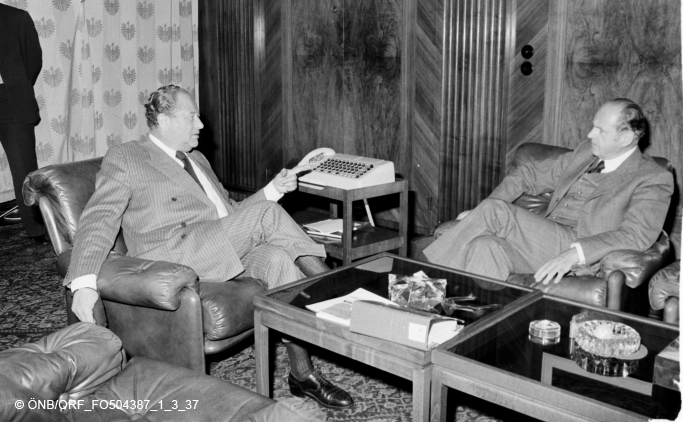
MINIORITY GOVERNMENT UNDER KREISKY 1970
In 1970, the Kreisky minority government was sworn in with the support of the Freedom Party, which in return managed to achieve a reform of the hitherto unfair electoral system.
The electoral reform of November 1970 is of decisive significance for the history of the FPÖ. This electoral reform was approved in the National Council by the combined vote of the SPÖ and FPÖ. It ensured the survival of even smaller political groups at parliamentary level, a major relief for the FPÖ, which only advanced to the status of a medium-sized party during the leadership of Jörg Haider.
The electoral law – which remains in force today – established democratic equality and so of course also provides a basis for the existence of other smaller parties. For like the erstwhile major parties, or medium-sized parties, smaller parties were now able to obtain National Council seats on the basis of about 25,000 votes. In 1970, the FPÖ had still required more than 50,000 votes for each of its then five seats, whereas the ÖVP had needed 26,000 and the SPÖ only 22,000.
This reform of the electoral law was not only a political payment made in exchange for agreement on the part of the FPÖ, then led by Friedrich Peter, to support the Kreisky minority government. In granting the reform, the Socialists were also delivering on the promise they had made in 1963 and 1964 and which had existed in the form of a written agreement since 1964. The "Federal Law of 27 November 1970 on the Election of the National Council (National Council Election Regulations 1971)" was therefore in many respects based on the proposal made by SPÖ deputies in July 1963. It corresponded in principle to the concept in the discussion document which Tassilo Broesigke had presented to the FPÖ leadership committees shortly after the National Council elections of 1959. The only difference to the 1963 proposal was that the number of parliamentary seats was to be 183 instead of 180. The proposed division into nine provincial constituencies – with each province comprising a single constituency – and two regional constituencies (Region 1: Vienna, Lower Austria and Burgenland; Region 2: Carinthia, Upper Austria, Salzburg, Styria, Tyrol and Vorarlberg) was adopted unchanged.
This electoral reform benefited not only the FPÖ, but also gave equal weight to each vote cast and it further ensured that all then existing parties be treated equally by the electoral arithmetic which converted votes into seats.
Further article: The Friedrich Peter Era.
Here is the film.
